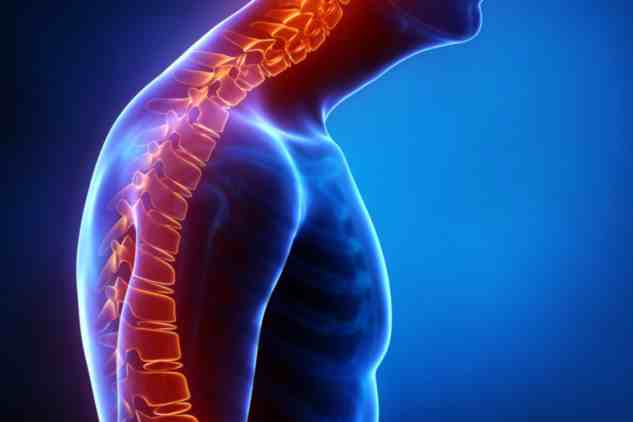
What is Hyperkyphosis and what are the types?
Hyperkyphosis is an alteration of the spinal column, a condition that in most cases affects teenagers, who nowadays spend a lot of time with their backs bent in front of personal computers, smartphones and video games
It can, however, also depend on a deformity of the vertebrae.
What is Hyperkyphosis
It is an accentuation of the physiological dorsal curve of the spine, i.e. dorsal kyphosis, which is located in the upper back.
This curvature is usually of slight intensity and, together with the two counter curvatures called lordosis, located on the neck and in the lumbar part of the back, allows support in an upright position and the flexibility of the trunk necessary for movement.
When the dorsal curve, i.e. kyphosis, becomes very pronounced and the so-called ‘hump’ appears, this is when hypercosis appears.
Causes
The causes can be various and varied.
Hyperkyphosis can be caused by:
- prolonged malposture
- heavy work involving excessive loads;
- a lack of muscle mass, which can be found among adolescents who spend many hours with their back bent in front of PCs, smartphones and video games;
- congenital or acquired deformities of the vertebrae or from vertebral fractures, which are frequent, above all, in young people who play sports with a high impact on the spine or in the elderly who suffer from osteoporosis, with a higher percentage in women.
Symptoms of kyphosis
In addition to the aesthetic damage, where a disharmonised torso is evident, with the upper part curved and not balanced by the lower part, the classic symptoms of hyperkyphosis are
- back pain and stiffness
- soreness in the spine, which can cause severe fatigue.
Diagnosis
The doctor will generally carry out a complete physical examination during the examination, including checking weight and height.
He or she may ask the patient to bend forward from the waist while the doctor observes the spine from the side.
After assessing the aesthetic signs and symptoms, the doctor might recommend
- a neurological examination to check reflexes and muscle strength;
- an X-ray or CT scan to determine the degree of curvature and detect deformities of the vertebrae;
- an MRI to detect an infection or tumour in the spine;
- an MOC, in the case of elderly people, which can monitor the evolution of Osteoporosis.
How hyperkinesis is treated
Treatment is determined according to the causes and intensity of the symptoms.
In cases of hyperkyphosis due to malposture (idiopathic hyperkyphosis), which is mostly found in young and adult people, stretching and muscle-strengthening exercises combined with physical therapy, such as tecar therapy, to be performed with an experienced physiotherapist, will be necessary in order to
- improve posture
- decrease pain;
- prevent its recurrence.
In the elderly, in addition to the exercises to be performed in combination with physical therapies, the specialist may evaluate the use of braces to support the spine.
Read Also:
Emergency Live Even More…Live: Download The New Free App Of Your Newspaper For IOS And Android
Anxiety: A Feeling Of Nervousness, Worry Or Restlessness
Firefighters / Pyromania And Obsession With Fire: Profile And Diagnosis Of Those With This Disorder
Hesitation When Driving: We Talk About Amaxophobia, The Fear Of Driving
Rescuer Safety: Rates Of PTSD (Post-Traumatic Stress Disorder) In Firefighters
Firefighters’ Risk Of Irregular Heartbeat Linked To Number Of On-The-Job Fire Exposures
Ambulance Professional Back Pain War: Technology, May You Help Me?
Exoskeletons (SSM) Aim To Relieve Rescuers’ Spines: The Choice Of Fire Brigades In Germany



